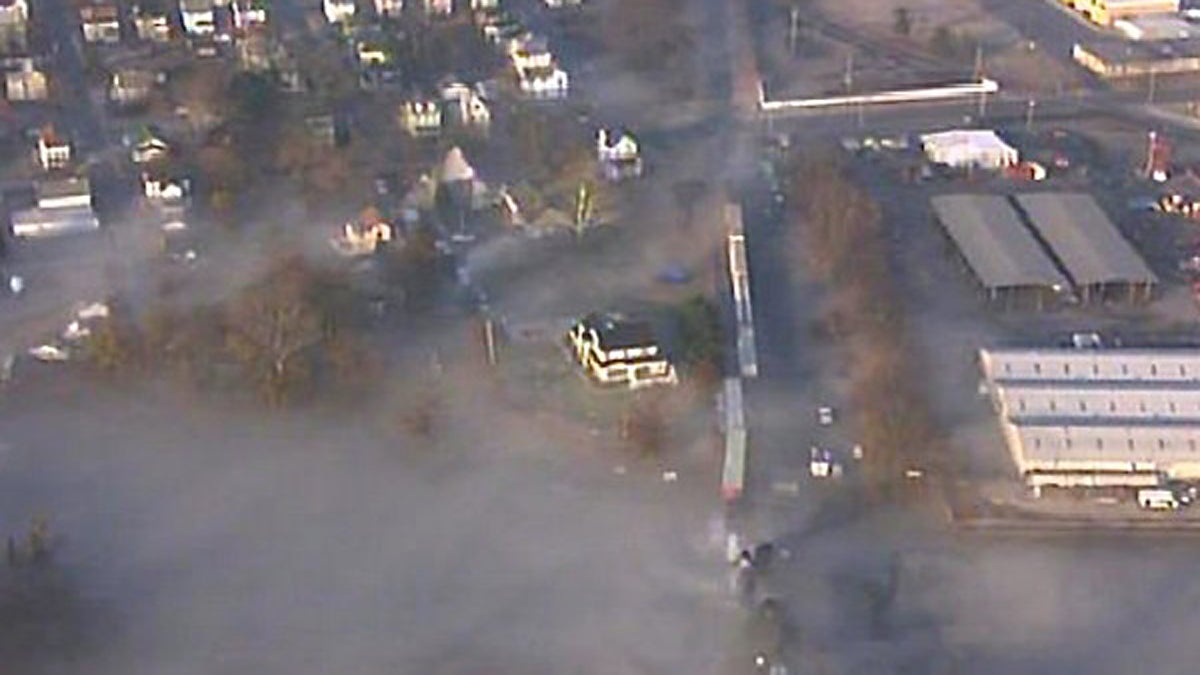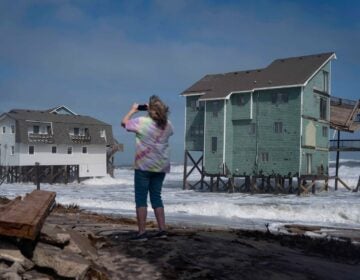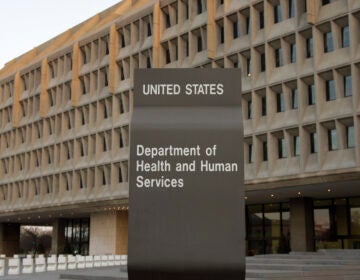CDC: Most emergency workers at 2012 Paulsboro toxic leak didn’t wear masks

Vinyl chloride gas covers Paulsboro, NJ after a train derailment on Nov 30, 2012. (Photo courtesy of NBC10)
Only 22 percent of the emergency workers at the 2012 Paulsboro train wreck — which leaked toxic vinyl chloride into the air and water — were wearing facemasks, according to a new report from the federal Centers for Disease Control and Prevention.
What’s more, of the 93 emergency personnel who responded to the CDC survey, 26 percent said they suffered from headaches, upper respiratory problems, coughing, neurologic symptoms, and nausea.
Those findings have prompted the agency to recommend that emergency services monitor the health of first responders after train derailments. It also suggested that facemasks be used whenever the level of dangerous substances is unknown or above established safety limits.
On November 30, 2012, a Conrail train jumped the tracks on a bridge crossing the Mantua Creek near the Delaware River. While much of the focus after the derailment has been on the health of local residents, the CDC report focused on emergency responders.
A previous federal report by the National Transportation Safety Board faulted several state agencies for failing to properly prepare emergency responders and neglecting to enforce laws that require municipalities to update their emergency preparedness plans in a timely fashion.
The state Department of Health called in the CDC to assist in assessing the community’s exposure, as well as the occupational health and safety of first responders.
Acute exposures to vinyl chloride have not been well studied, according to the CDC. The colorless gas has a mild, sweet odor and is used in making plastics. Brief exposure can cause respiratory irritation, headaches, drowsiness, and dizziness. Long-term exposure can cause liver damage, including tumors and fat accumulation.
Of the 72 Paulsboro responders who didn’t wear facemasks, 49 percent said no respiratory protection was required for their work; 24 percent said none was available; 17 percent said they were told not to wear protection; and 17 percent said they didn’t think they needed it. In addition, one person said a facemask got in the way of work. Some people gave more than one answer.
According to the U.S. Occupational Health and Safety Administration, emergency responders with potential exposure to hazardous substances should wear respirators until the incident commander determines by monitoring the air that they’re no longer needed. Monitoring wasn’t available during the Paulsboro incident.
“The implementation of a respiratory protection program, including the use of exposure monitoring to determine when respirator use is required, might assist emergency responders in future events,” according to the CDC report.
The responders surveyed included emergency medical services workers, firefighters, police officers, and hazardous materials technicians. The CDC cautioned that it wasn’t able to contact all of the responders. In addition, it didn’t measure each person’s exposure to vinyl chloride, so it couldn’t link exposure levels to symptoms.
______________________________________________
NJ Spotlight, an independent online news service on issues critical to New Jersey, makes its in-depth reporting available to NewsWorks.
WHYY is your source for fact-based, in-depth journalism and information. As a nonprofit organization, we rely on financial support from readers like you. Please give today.




